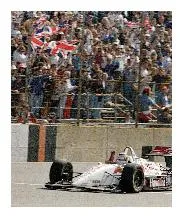Last year, McLaughlin won three races while earning three poles, but his championship hopes were sabotaged by a handful of unforced errors. This year, according to Indy car driver-turned-TV announcer Townsend Bell, McLaughlin’s biggest title rivals promise to be his two team-mates – Will Power and Josef Newgarden – along with Scott Dixon and Alex Palou at Chip Ganassi Racing. “McLaughlin is the legitimate fifth guy in the mix,” Bell says. “He’s just a total winner – been there, done that, gonna do it again. I think year one was harder than he expected. Now he’s ready to put it all together. There’s not a place where he’s weak except maybe Indy.”
McLaughlin admits that he’s still learning on ovals. “Coming up to speed, I’ve been fine,” he says. “Having team-mates who know the limit has helped a lot because if they can do it, I can do it. But the race side, experimenting with the lanes and running the high lane, has taken a little time to get comfortable with.” Another nuance he’s still mastering is left-foot braking, a technique he didn’t use in V8 Supercars but which is critical to bleed off speed and balance the car in high-speed corners.
In 2023, McLaughlin returns for his second season with race engineer (and golfing buddy) Ben Bretzman, who helped shepherd Simon Pagenaud to an IndyCar championship and an Indy 500 victory. “Now, it’s just a matter of polishing what I’ve learned,” McLaughlin says. “I’m not saying I’m going to come out and dominate. But we’ve got some of the best cars, and my team-mates are probably the two best drivers. So if we can beat them, we’re doing a pretty good job.”
Will McLaren challenge Penske, Ganassi and Andretti for IndyCar supremacy?

McLaren’s bright spark Pato O’Ward is still looking upset the Ganassi/Penske/Andretti axis
IndyCar
Zak Brown established a beachhead in IndyCar in 2020 with the newly named Arrow McLaren SP team and immediately started restructuring. Although Sam Schmidt and Ric Peterson retained ownership of the team, both of their drivers were axed. Since then, Schmidt and Peterson have been reduced to minority partners. In November, team president Taylor Kiel decamped to Ganassi. Now, the operation – known simply as Arrow McLaren – is being run by rising star Gavin Ward, a Canadian who helped Red Bull win four F1 World Championships before spending four productive years as Josef Newgarden’s race engineer at Penske.
Last year, Pato O’Ward – a 23-year-old phenom with the lightning-quick hands of a Wild West gunslinger – won two races, but his team-mate, Felix Rosenqvist, managed only a single podium. This won’t cut it in 2023. “We did a deep dive after the season,” Ward says, “and one of the things that came out pretty clearly is that where we were let down, really, was reliability. We need to minimise mistakes and the bad days that sunk our championship hopes, frankly. Also, we weren’t on the level of performance of Penske, specifically, and we need to find that.”









